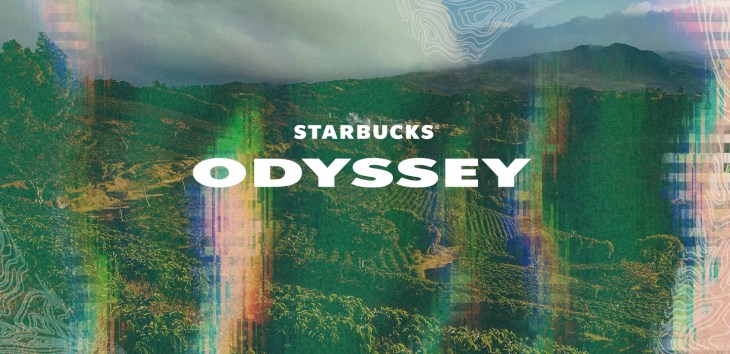As the world continues to become more digital, the demands and needs of consumers are changing — and NFTs might be a big part of the future for brands looking to shake up their rewards programs, Adam Brotman, co-CEO and co-founder of Forum3, said to TechCrunch.
“We’re hearing from a lot of other brands, whether they have a loyalty program or not, that what all big brands are contending with right now is that the consumer is changing,” Brotman, who is also the former chief digital officer of Starbucks, said. “It’s not just Gen Z or millennials, but the consumer in general has become more hyperdigitalized and more appreciative of digital goods.”
At the beginning of this month, Starbucks launched a blockchain-based loyalty program and NFT community dubbed Starbucks Odyssey. The initiative was launched through a partnership with Forum3, which helped build out the coffee giant’s NFT project, Brotman said.
In September, Starbucks said it envisioned the program as a way for its most loyal customers to earn a broader, more diverse set of rewards beyond the perks they can get today, like free drinks. Instead, Odyssey introduces a new platform where customers can engage with interactive activities called “Journeys” that, when complete, allow members to earn collectible Journey Stamps — which is Starbucks’ less technical terminology for NFTs.
Aside from Starbucks, web3 customer loyalty-focused Forum3 has been working mainly with consumer brands, retailers (including restaurants), sports leagues and direct-to-consumer subscription companies, Brotman said.
“Odyssey is an extension of the Starbucks loyalty program,” Brotman noted. “It’s an opportunity to innovate and extend loyalty.”
Separately, earlier this year, Nike launched an NFT and metaverse platform, .Swoosh, which will allow shoe fanatics to trade and create digital “wearables and virtual sneakers.”
A loyalty program is often centered around giving something to customers in return for their loyalty to a brand, Brotman said in a blog post. “What does the brand give in return? Discounts and digital convenience, such as remembering your favorite items, address, and payment methods, suggesting items, and letting you order ahead.”
But what if these digital points, or royalty rewards, could actually be owned by customers? That’s where NFTs, or true digital ownership, comes into play — and provides a “much more immersive loyalty layer,” Brotman said. It allows customers to receive points and digital collectibles that they own and could use in ways beyond what a typical rewards program allows today.
Odyssey and Nike’s .Swoosh platform may be just the beginning of a bigger tidal wave as brands look for new opportunities to build a stronger relationship with customers through digital means, Brotman said. “Digital goods aren’t new concepts. But the idea that you can own it [like an NFT] and maybe be rewarded with a digital collectible is new to them.”
It’s also all about the way a company presents these NFTs — or digital collectibles, Brotman noted. “It’s a new flywheel that’s interesting to customers but has to be accessible. You shouldn’t have to know about blockchain or crypto to participate in it.
“Right now if you ask the average person if they care about NFTs, the answer is no — they don’t even understand what an NFT is and wouldn’t care,” Brotman said. “But if you ask the average person if they would like a digital collectible that’s easy and fun to use, the answer is most likely to be yes.”
For example, look at NBA’s Top Shot marketplace, an officially licensed platform for digital collectibles. “With Top Shot, you can barely even tell it’s blockchain or NFT-related,” Brotman said. “Essentially it’s a digital collectible you buy with your credit card and you can sell it on a marketplace or collect and have fun with. That was a huge onboarding experience for the current web3 NFT community. Many people got exposed to the fun and concept of NFTs through that experience.”
Top Shot “made people completely oblivious to the blockchain and did a very good job of onboarding people into the fun experience of owning a digital collectible,” Brotman said. “That would then allow individuals to decide if they wanted to dive deeper into the self custody, hardcore web3 experience, which is also fun.”
These big brand-owned digital collectibles allow people to take a journey into web3 at their own pace, Brotman said. “It’s smart to start with an accessible, easy-to-use hosted experience that even uses fiat, then allow people to move into deeper experiences if they want to.”
